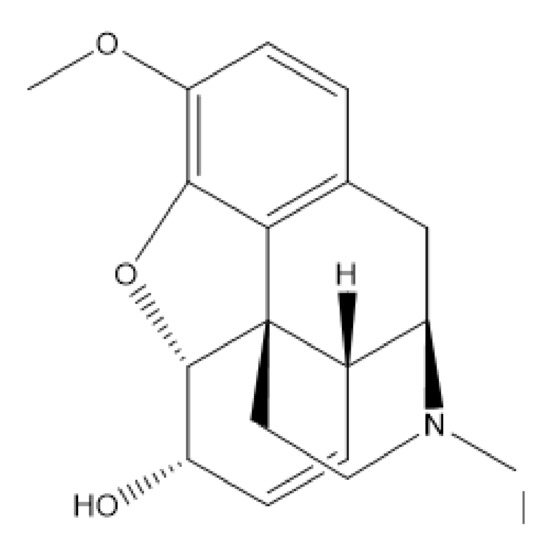Codeine is derived from morphine, an opioid analgesic, and has weaker analgesic and
sedative effects than the parent molecule. This weak opioid is commonly used in combination with
other drugs for over-the-counter cough relief medication. Due to the psychoactive properties of opioid
drugs, the easily obtained codeine often becomes subject to misuse. Codeine misuse has
emerged as a concerning public health issue due to its associated adverse effects such as headache,
nausea, vomiting, and hemorrhage. Thus, it is very important to develop reliable analytical techniques
to detect codeine for both quality control of pharmaceutical formulations and identifying
drug misuse in the community. This review aims to provide critical outlooks on analytical methods
applicable to the determination of codeine.
- Codeine
- drug analysis
- colorimetry
- spectrophotometry
- electrochemistry
- chromatography
- capillary electromigration
1. Introduction

2. Colorimetric Assays
| Compound | Codeine | Heroin | Morphine | Ref. |
|---|---|---|---|---|
| Marquis | violet | violet | violet | [15] |
| Mecke | blue to green | blue to green | blue to green | [15,22] |
| Froehde | light green | n/a | violet to grey | [15,23] |
| Mandelin | green to blue | blue-grey | light grey | [15] |
| Lieberman | Black | n/a | black | [15] |
| Ferric sulfate | n/a | n/a | red | [13] |
| Nitric acid | orange slowly changing to yellow | yellow slowly changing to light green | orange rapidly changing to red then slowly to yellow | [13] |
| AuNPs | green | - | - | [17] |
This entry is adapted from the peer-reviewed paper 10.3390/molecules26040800
